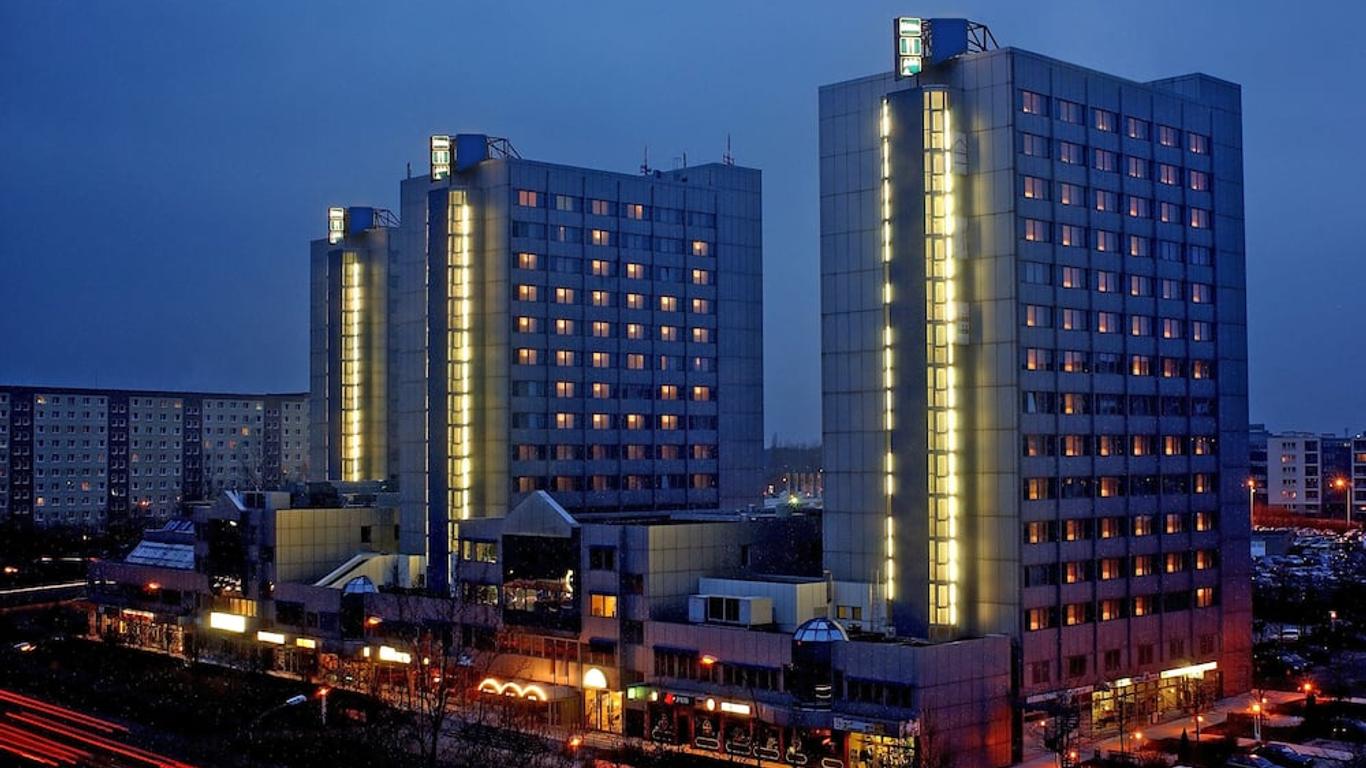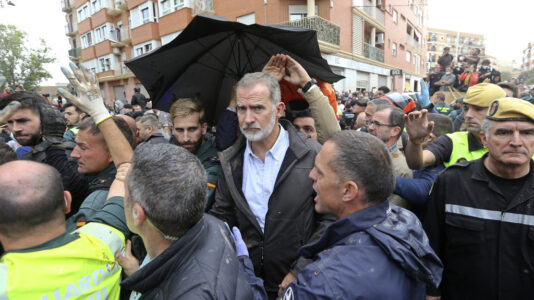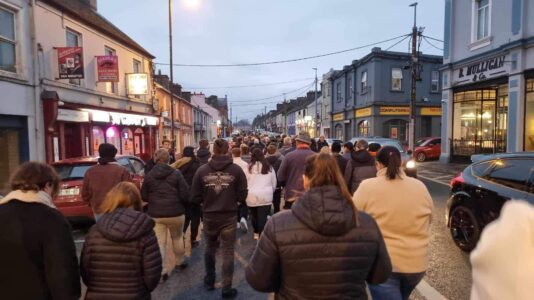In the Berlin neighborhood of Lichtenberg, a massive migrant accommodation will be built to house 1,200 migrants. As seen with other projects being built across Germany to accommodate the hundreds of thousands of newcomers that arrive every year, an “information” meeting devolved into shouting and heated discussions. Some locals stormed out. Many of them expressed fear.
The former Hotel Berlin City East, which features three high-rise towers, is meant to help with overflowing conditions at the former Tegel Airport, which as Remix News has previously reported, was once a bustling airport but is now home to row after row of containers housing migrants. Now, some of the migrants there, 740, will be transferred to these hotels as early as this month.
The information session, which was hosted in the hotel where the migrants will be housed, was organized by CDU state parliamentarian Dennis Haustein and was “packed” with 300 people.
According to BZ newspaper, the mood was “heated.” Speakers were shouted down. Attendees complained about supermarkets and playgrounds that are already overcrowded. CDU MP Haustei was applauded when he noted there was already a lack of supermarkets and access to medical facilities.
Welt newspaper previously sent a reporter to the area, and every single person the reporter spoke to offered a negative perspective on the planned migrant home. With the exception of one person, they refused to provide their last names out of fear of retaliation.
Notably, government statistics indicate that Lichtenberg has the fourth-highest number of migrants in all of Berlin’s 16 districts, standing at 4,054. In fact, most of the migrants are concentrated in the east of the city where the anti-immigration Alternative for Germany (AfD) is strongest. The only three districts with higher numbers are all eastern districts — Marzahn-Hellersdorf, Tempelhof-Schöneberg, and Pankow, with Pankow hosting 5,410 migrants.
Notably, in some of the city’s wealthier western districts, such as Steglitz-Zehlendorf and Reinickendorf, there are substantially fewer migrants.
“It cannot be that western districts such as Steglitz-Zehlendorf or Reinickendorf shirk their responsibility at the expense of the eastern districts and the Governing Mayor (Kai Wegner) stands by and watches,” said Sebastian Schlüsselburg, the directly elected Lichtenberg MP and budget policy spokesman for the Left Party in the Berlin House of Representatives. Welt said that he believes there is an unequal distribution of migrants between Berlin districts.
Local resident Matthias told Welt: “I don’t think it makes sense to accommodate 1,200 refugees centrally in one place. That will certainly lead to tensions among the refugees, but also to tensions with the residents.” He also noted that LIcthenberg does not have the necessary infrastructure to support these migrants.
“That’s too many people in one place at once,” he said, noting that “such decisions are made by people who do not live here themselves.”
Another resident, 66-year-old Heinz, said the current problems will only grow with more migrants.
“I see it in our residential area: We have garbage containers downstairs. What do the foreigners do? Throw the garbage over the balcony, and the same thing will happen here. Then we can look forward to vermin, rats and all sorts of things,” he said.
The 82-year-old Edeltraud said she is scared: “I meet a lot of young people here, they are bold, frighteningly cheeky — 12, 14 — they can’t be any older. One is always the biggest in the group, and the others join in. I sometimes have the feeling that the German population is scared of these people, and so am I.”
Notably, Berlin is run by a Christian Democrat (CDU) mayor known for his open borders stance, even if the CDU is trying to rebrand itself as a tough-on-immigration party. Locally, Martin Pätzold, the district chairman of the CDU district association Berlin-Lichtenberg, complained about the situation.
“We are at our limit locally and cannot take in any more refugees. Integration cannot succeed like this, and the Berlin Senate must finally realize that. We need a fairer distribution within the city,” he said.
District mayor Martin Schaefer (CDU) said he was not asked if he wanted to host the migrants.
“The state of Berlin decides,” he said, expressing dismay that 4 of the 16 new container sites being built in Berlin will also be constructed in Lichtenberg.
During the meeting, Social Affairs Senator Cansel Kiziltepe (SPD) was criticized by attendees for not making an appearance. One concerned senior said the towers could have been used for senior housing and a student dorm.
Berlin has been facing a migrant crisis for years and is constantly running out of space. Just outside the city, in Petersdorf, there are plans to move 500 migrants to a town of 600, nearly doubling the small town’s population. There, residents are also outraged; the entire political representation of the town voted against the move, but were overruled by the district.






